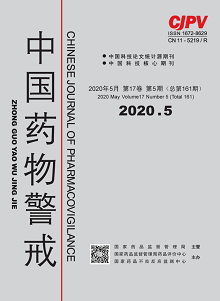|
|
Adverse Drug Reactions in 45 Patients with COVID-19
YANG Ping, LI Chanjuan, AN Wei
2020, 17(5):
272-275.
DOI: 10.19803/j.1672-8629.2020.05.04
ObjectiveTo analyze the adverse drug reactions (ADRs) that occurred during the treatment of patients with COVID-19 in our hospital. Methods Cases of ADRs were collected by clinical pharmacists via questionnaire survey, Kan gnet system, and disease course review. The gender, age, previous medical history, allergic history, report type, suspected drugs,usage and dosage, and clinical manifestations of adverse reactions were retrospectively analyzed. Results A total of 45 ADR cases were collected, and the incidence of ADR was 12.4%, including 44 cases in general(39 known cases, 5 new cases), and one case of severe ADRs. ADRs occurred more frequently with antiviral drugs lopinavir / ritonavir tablets(LPV/r), glucocorticoid methylprednisolone(MP), and the antibacterial drug moxifloxacin. Conclusion During clinical use of multiple drugs for COVID-19, it is necessary to have a clear idea about indications, patients' health status, drug interactions and precautions. While efficacy is emphasized, related ADRs should also be made better-known, spotted and reported in time to ensure the safety of drug use.
References |
Related Articles |
Metrics
|

